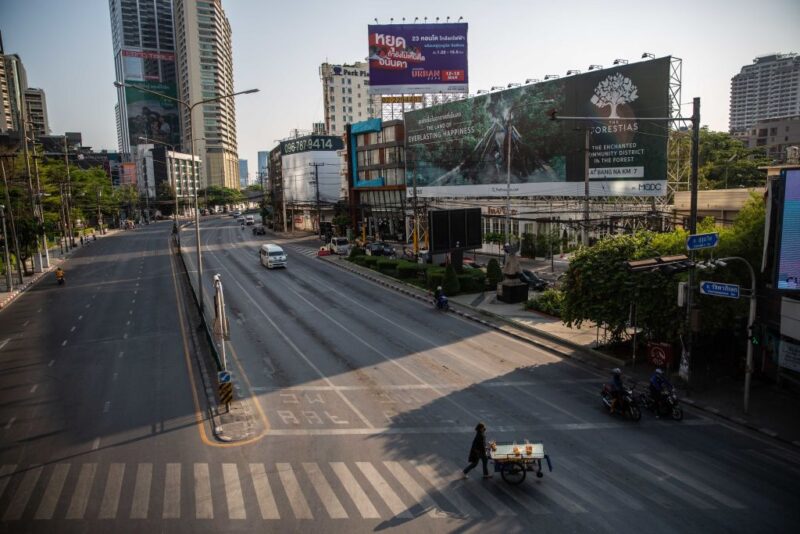A huge digital transformation is taking place as a result of Covid-19, changing the way we work, study, play, keep fit and stay connected. Our innate adaptability has brought us home fitness, live DJ sets, e-sports and TV broadcasts from people’s homes. Many commentators believe this represents an irreversible shift to all things digital. Most narratives are centred around users – disruption of old habits, (forced) forming of new ones, with conscious adoption once things return to normal and we realise the ease and convenience of doing everything online.
This focus on people’s habits is one sided though. It ignores the changes that businesses are making, not just for short-term continuity, but for long-term sustainability, and how they will reinforce new behaviours. It also ignores the complex and multi-faceted needs that people fulfill through shopping, work, and eating out. We are social creatures and connection, excitement, fun and adventure are part of our DNA. We want and need experiences, but can emerging digital technologies re-create those experiences and meet our diverse needs?
No immediate return to normal
A central question in most discussions is “will people go back to their old habits when things go back to normal”. Of course, there is no switch to be flipped where everything will return to a pre-Covid world. All governments are taking gradual steps to release people and businesses from lockdown, and all of these steps still prioritise social distancing.
In Thailand, we may be able to visit department stores and cinemas now, but those experiences are not the same, with constant reminders of the potential threat. Many people who have returned to work may wish to return to the relative safety and predictability of their home after work. The Economist argues that the impact of social distancing alone will shrink the economy by 10% as shopping and other leisure activities become less desirable.
Businesses innovate to survive
Businesses have been forced to innovate to ensure their survival. Those restaurants and retailers not already doing so have been forced to offer home delivery and contactless operations. Car dealers have developed virtual showrooms and medical practices have introduced remote healthcare. These are the obvious changes that we can see which appear to be driven by continuity, but behind the scenes businesses are planning possible future scenarios and re-calibrating business models, with an emphasis on resilience and flexibility.
Established ideas about fixed and variable costs are re-examined as many businesses question the high level of investment and limitations of real estate assets – the places where we work, study and shop. Businesses are rightly cautious about short-term revenue prospects and digitalisation initiatives for many are part of longer-term plans to drive down operating costs. Increasing business digitalization is also helping to reduce human contact to meet customers’ safety concerns. McKinsey argue that, in terms of digital acceleration, we have vaulted five years forward and CBRE report that most APAC retailers plan to accelerate investment in online retailing and delivery apps. With new digital innovation radically changing customer experiences, will this be enough to create permanent behavioural change?
Example: Online Marketplaces
Online marketplaces such as Alibaba and Lazada have increased their market share in recent years and have benefitted greatly from Covid-19. With very low barriers to entry for small businesses, many new businesses are thinking ‘digital first’. Facebook, already used by lots of small businesses in Thailand as their primary marketing and sales channel, is further developing its capabilities under its new Facebook Shops offering, which will now handle transactions. Such platforms also enable producers to sell their goods directly. As Thais turn to support their local communities during Covid-19, these platforms allow Thais to support local people directly.
But do these platforms help us experience the joy of shopping or the chore of buying? Historically, online channels had advantages in terms of convenience, comparison, cost and later personalization (you could say the more functional aspects of shopping) but could not recreate well the traditional shopping experience. Online marketplaces have incorporated many gamification approaches to reimagine the online shopping experience as one of discovery, fun and adventure. Alibaba in China features live streaming from stores andcreating virtual stores is more possible and affordable than ever.
But shopping is for many is a social occasion with family, as much about relaxation, entertainment, connectionand escape (with great food and aircon). That is what Thailand’s excellent modern department stores deliver. Equally popular are traditional outdoor markets, community malls, farmers markets and increasingly pop up stores. The diversity of retail formats in Thailand is a clear reflection of the varying need states and occasionsthat people have.
Blurring of Boundaries – Differentiation is Key
Online marketplaces are innovating to tap into more aspects of a traditional shopping experience. And traditional ‘bricks and mortar’ retailers are also learning from best practice digital experiences. In China, as luxury stores forced to close were re-purposing sales assistants to work as brand ambassadors online. In many ways there is a blurring of lines and boundaries.
People will of course return to physical stores to seek the social and leisure experiences that online cannot provide. We expect that while safety needs remain paramount for some time, digital shopping occasions will increase, and rapid innovation will create better and more diverse experiences. Retail brands (and real estate owners) will need to think in very clear terms about the need states and occasions they are focused on and deliver best in class experiences.
Consumer brands need to understand that the way that people experience your brand is changing and keep abreast of new digital touchpoints and online customer journeys. However, it’s equally important to understand the need states that digital touchpoints fulfil and those that they do not. There will also be a need for physical as well as digital experiences and brands need to develop their strategy accordingly. People still need to relax, have fun, connect and escape. The question is, how and where can brands meet those needs?
About Culture Kitchen
Culture Kitchen combines cultural insight with marketing, branding and behavioural change know-how to help you plan your brand’s future growth. Click here to download our free ebook covering the 7 Ways that Covid-19 will Shape the Future of Brands.
About the Study
The findings are the result of a collaboration between insights consultancies across 17 countries. The effort was led by Beyond Research, based in Milan, and covered North and South America, Europe, Middle East and Asia-Pacific. Desk research covered multiple data sources including local country case studies, Google search trends, newspaper articles, and social media along with country-level cultural analysis.






